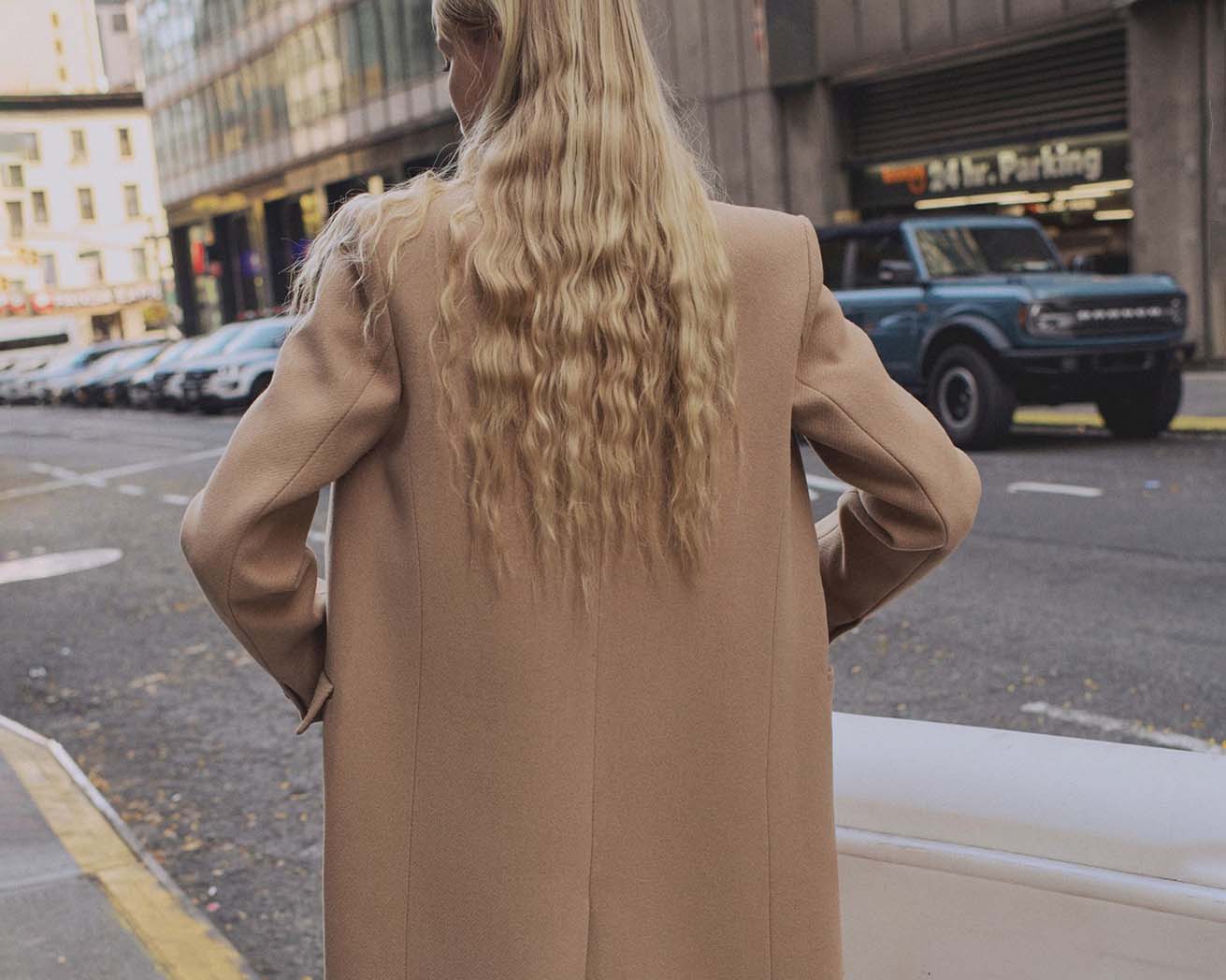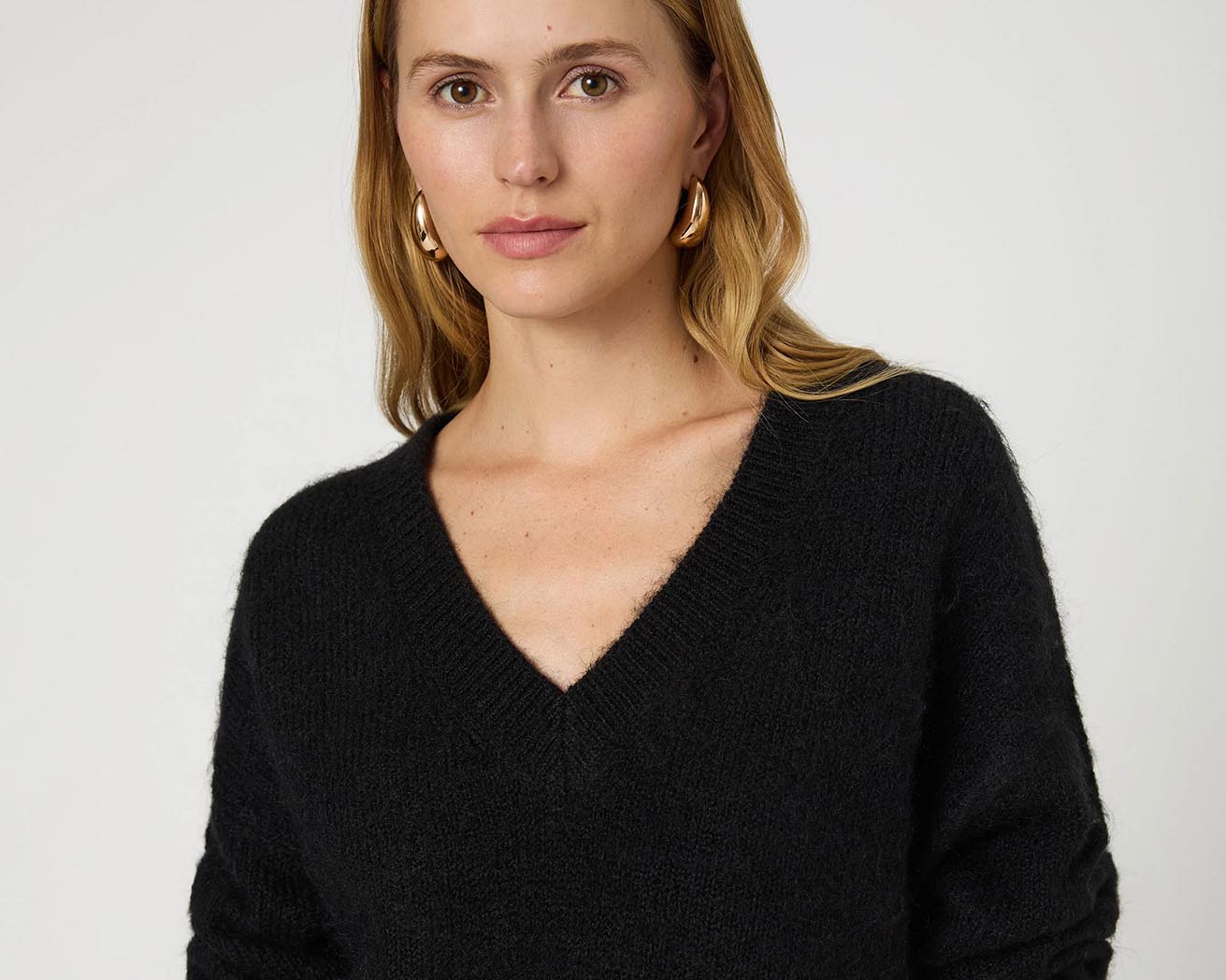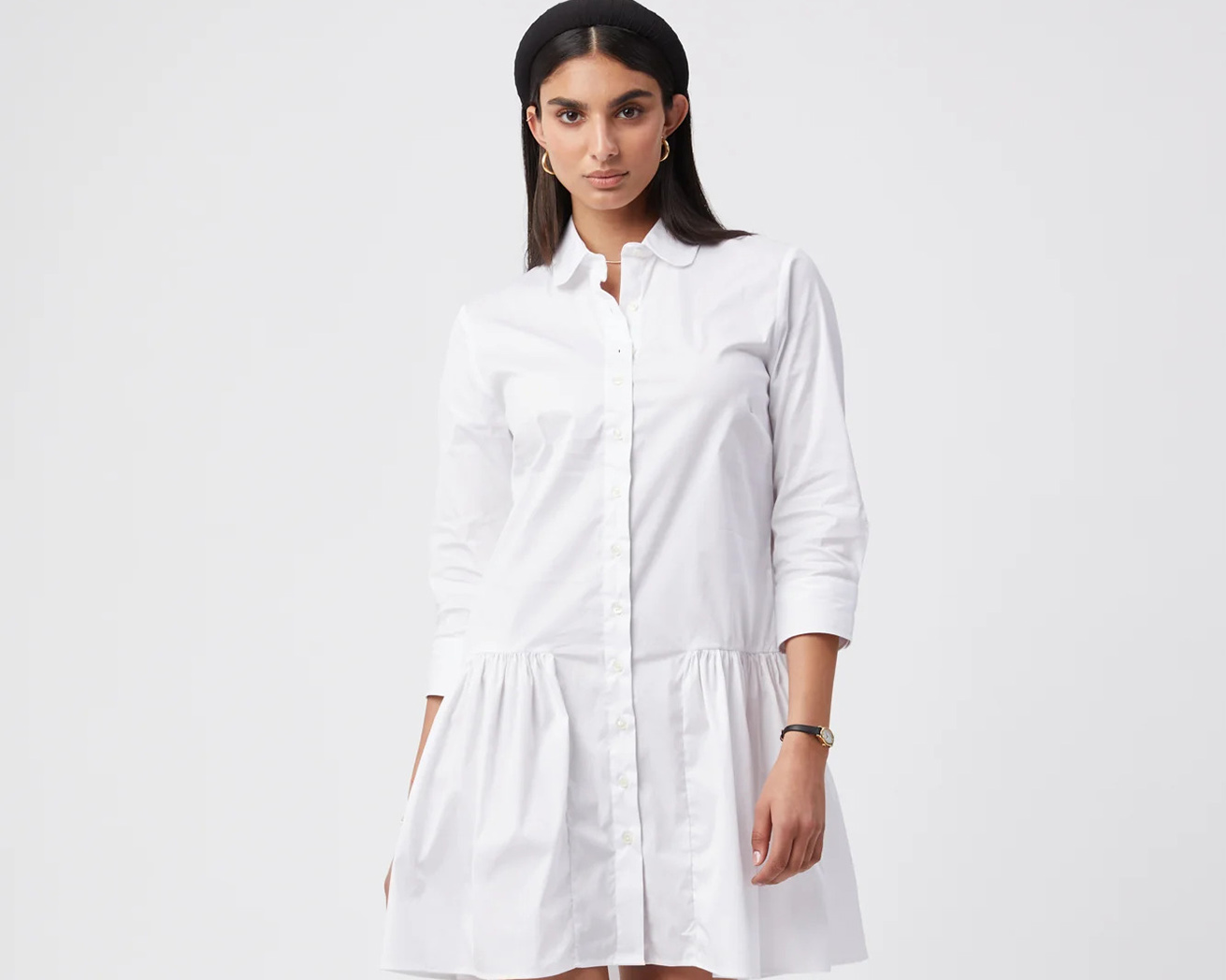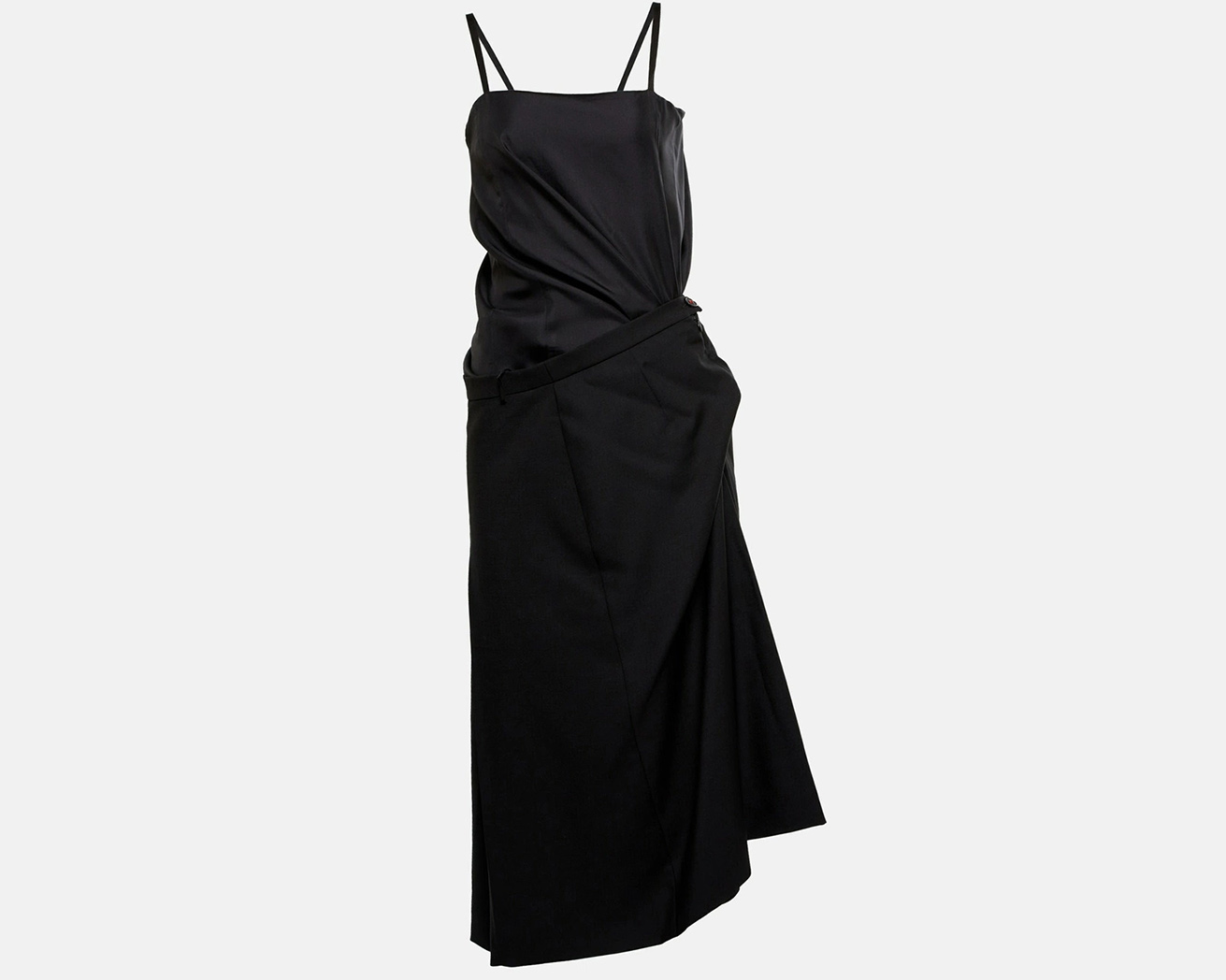Winter wardrobes are always filled with “texture temptations”: wool, coats, leather, tweed, velvet, down… Almost every fashion brand emphasizes “luxury,” “warmth,” and “elegance” in their fall-winter collections. But achieving that “looks expensive” aura doesn’t come from simply buying pricey pieces. The real key lies in choosing the right materials, and understanding the “pairing codes” among them.
I firmly believe: the foundation of winter fashion is your ability to master fabric textures. Even with basic designs, if the fabric is high-quality, it immediately enhances your presence with sophistication. On the other hand, poor fabric choices can undermine even the most well-curated looks.
01. Wool vs. Cashmere: Seem Similar, Worlds Apart
Wool-based fabrics are winter essentials—especially wool and cashmere. But they’re not interchangeable.
• Wool offers strong warmth and structure, ideal for coats, suits, and structured skirts. Many wool items are blended with synthetics for durability and lower costs but may appear coarser.
• Cashmere, on the other hand, is soft, lightweight, and supremely warm. A good cashmere piece feels smooth, never itchy, and instantly adds a touch of luxury. It’s more expensive—just a scarf can cost as much as a wool coat.
My Advice:
• Choose cashmere for base layers like sweaters or scarves—it’s comfortable and upscale.
• Opt for tightly woven, fine-yarn wool in outerwear.
• Avoid high polyester-blended wool—it pills easily and lacks structure.
02. Woolen Tweed: The Backbone of Winter Silhouettes
Wool tweed is one of my winter staples, especially for coats. It’s practically synonymous with sophistication.
Why Tweed Wins:
• Clear texture, dense weave, and great drape.
• Supports structured silhouettes like sharp shoulders or oversized cuts.
• Slightly nubby surface adds visual depth.
Style Tips:
• Pair tweed coats with soft underlayers like cashmere or silk for contrast.
• Choose patterns like herringbone or checks for that British elegance.
• Avoid overly stiff or heavy tweed that can look bulky or rigid.
03. Silk vs. Imitation Silk: Where Details Reveal Everything
You might not associate silk with winter, but I often include silk pieces as layering items or accessories to soften bulky outfits.
Why Silk Works:
• Smooth, fine texture with a natural glow.
• Pairs beautifully with heavy materials like wool and leather.
• Surprisingly warm—great for linings and underlayers.
Faux silk may look similar but feels slippery, is less breathable, and reflects light too harshly, making it look cheap—especially under lighting.
Suggested Pairings:
• Silk blouse + tweed coat = elegant and polished.
• Silk scarf + leather jacket = edgy contrast.
• Silk slip dress + cardigan = soft and layered.
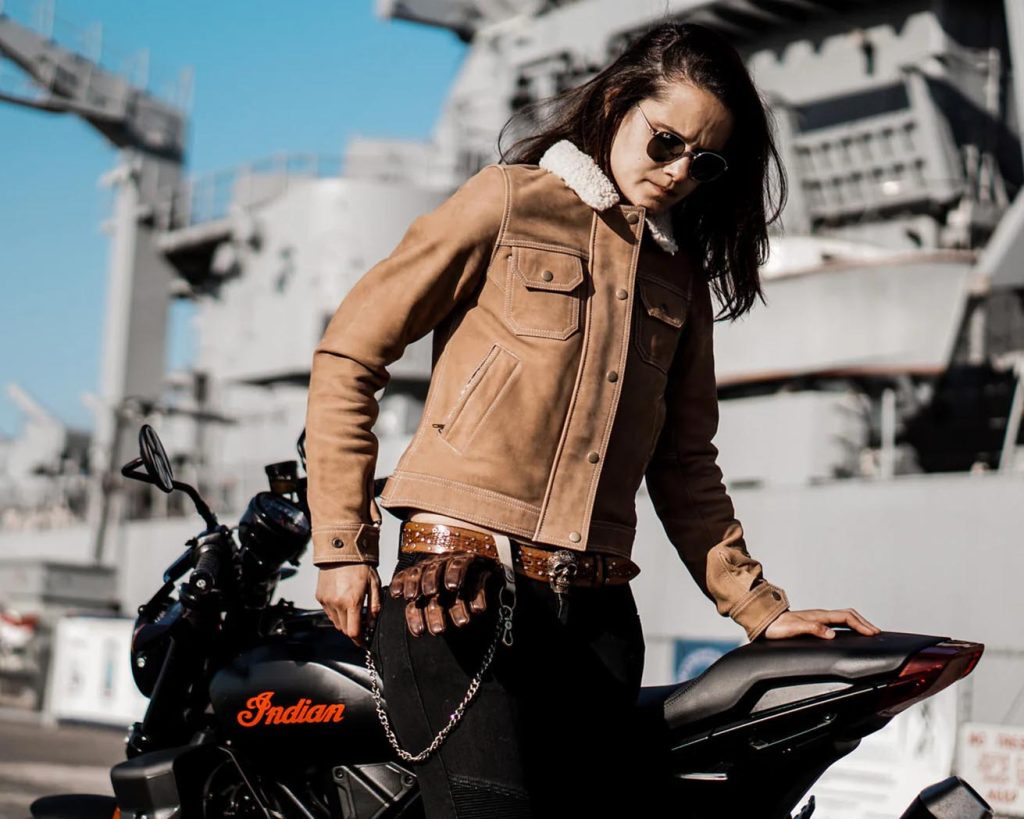
04. Velvet: A Touch of Dramatic, Vintage Romance
Nothing captures the romantic winter mood like velvet—especially at dinners or festive occasions. Its understated shimmer and plush texture add instant glamour.
• Velvet is thicker and denser.
• Silk velvet is lighter, smoother, and drapes more fluidly.
Wearing Tips:
• Use velvet in small doses: dresses, high-waist trousers, accessories.
• Avoid full velvet outfits—they can age you or feel too heavy.
• Stick to deep tones: emerald, navy, burgundy bring out the richness.
The fabric’s soft sheen outlines curves and emits an elegant aura—a built-in luxury filter.
05. Leather vs. Faux Leather: A Fine Line Between Chic and Cheap
Leather adds structure and coolness to any winter outfit. Whether it’s a biker jacket, trench, boots, or pants—it introduces an edge.
Key Differences:
• Real leather has natural grain, a rich patina, and soft warmth that improves with wear.
• Faux leather/PU is overly shiny, plasticky to the touch, and stiffens in cold weather.
How to Tell Quality:
• Shine: genuine leather has a soft matte glow; faux leather is overly reflective.
• Details: look at stitching and edge finishes.
• Scent: real leather smells mild and earthy; faux versions often smell chemical.
Wearing Ideas:
• Coat + leather pants = structured meets sleek.
• Leather shirt + wool skirt = textural balance.
• All-black leather boots + cashmere dress = minimalist and commanding.
06. Down & Puff Factor: Warmth Doesn’t Mean Sacrificing Style
Down coats get a bad rap for being bulky, but the right design and materials make all the difference.
What to Look For:
• Matte, non-reflective outer fabric.
• High fill ratio—white goose down is warmer and lighter than duck down.
• Tailored, clean-cut silhouettes.
I Prefer:
• Neutral colors: black, cream, deep brown.
• Sleek, structured designs without excessive details.
• Matte finishes that resist static and pilling.
With the right choice, your down jacket can become a stylish centerpiece.
07. Knits: Density Doesn’t Mean Bulk—It Means Quality
Winter = knitwear season. But not all knits are made equal.
What High-Quality Knits Have:
• Tight, even stitching.
• Smooth yet substantial texture.
• Good drape, minimal pilling.
Cashmere knits or those blended with silk often feel far more luxurious than basic cotton knits.
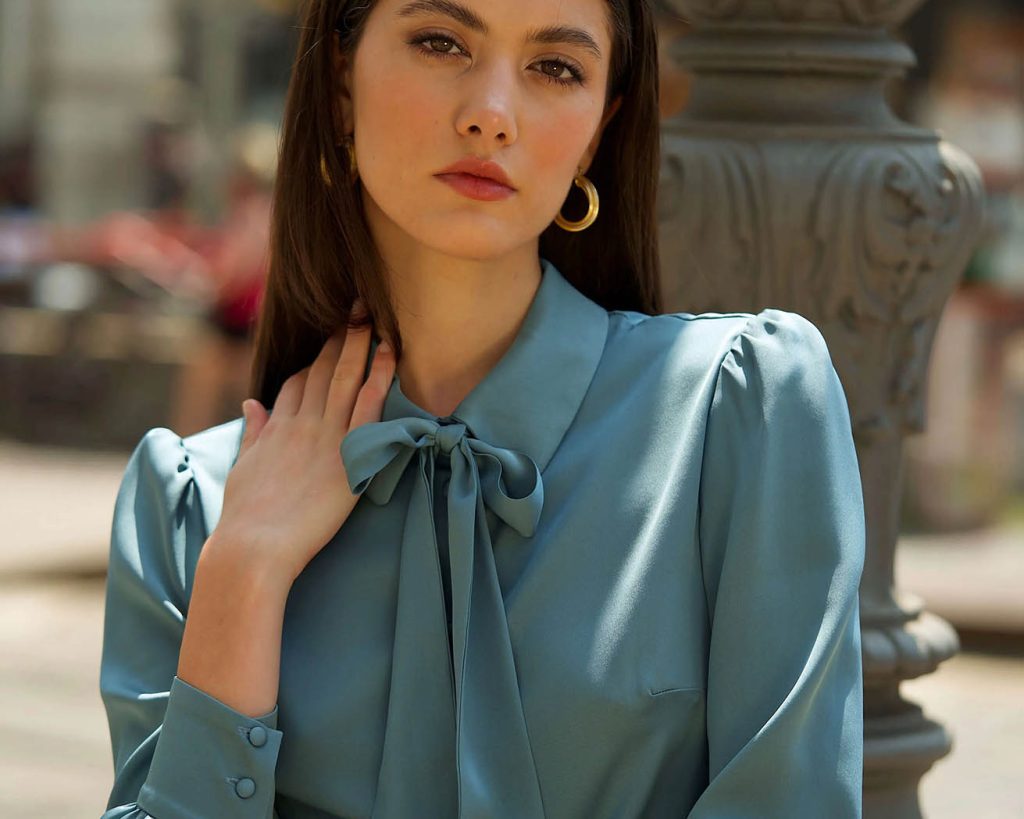
Wearing Tips:
• Pair knits with leather for a contrast of soft and tough.
• Knit sets (top + skirt) create instant polish.
• Use thick rib knits as outer layers, fine knits for base layers.
08. Material Mixing: The True Art of Winter Dressing
Relying on one fabric looks flat. Mixing textures is my favorite way to add richness and depth.
Examples:
• Wool coat + silk shirt + leather boots = sharp sophistication.
• Velvet skirt + knit sweater + suede boots = vintage charm.
• Down jacket + cashmere dress + leather gloves = warmth with elegance.
It’s not about brand names, but how your materials play together—like a symphony of textures.
09. My Winter Fabric Essentials List: Start Here
If you’re unsure where to begin, here are my go-to upgrades:
• A pure cashmere turtleneck: chic and comfy.
• A structured wool coat: defines your silhouette.
• Smooth leather ankle boots: elevate the whole outfit.
• A silk scarf or blouse: adds grace.
• A velvet midi skirt: perfect for holidays.
• A matte, well-cut down jacket: style meets warmth.
Fabric Is the Soul of Winter Style
Many mistake “looking expensive” as being about logos or price tags. But real elegance comes from your command of quality and texture. Colors and styles can be mimicked, but the feel and look of great fabric can’t be faked. That’s where true luxury lives.
